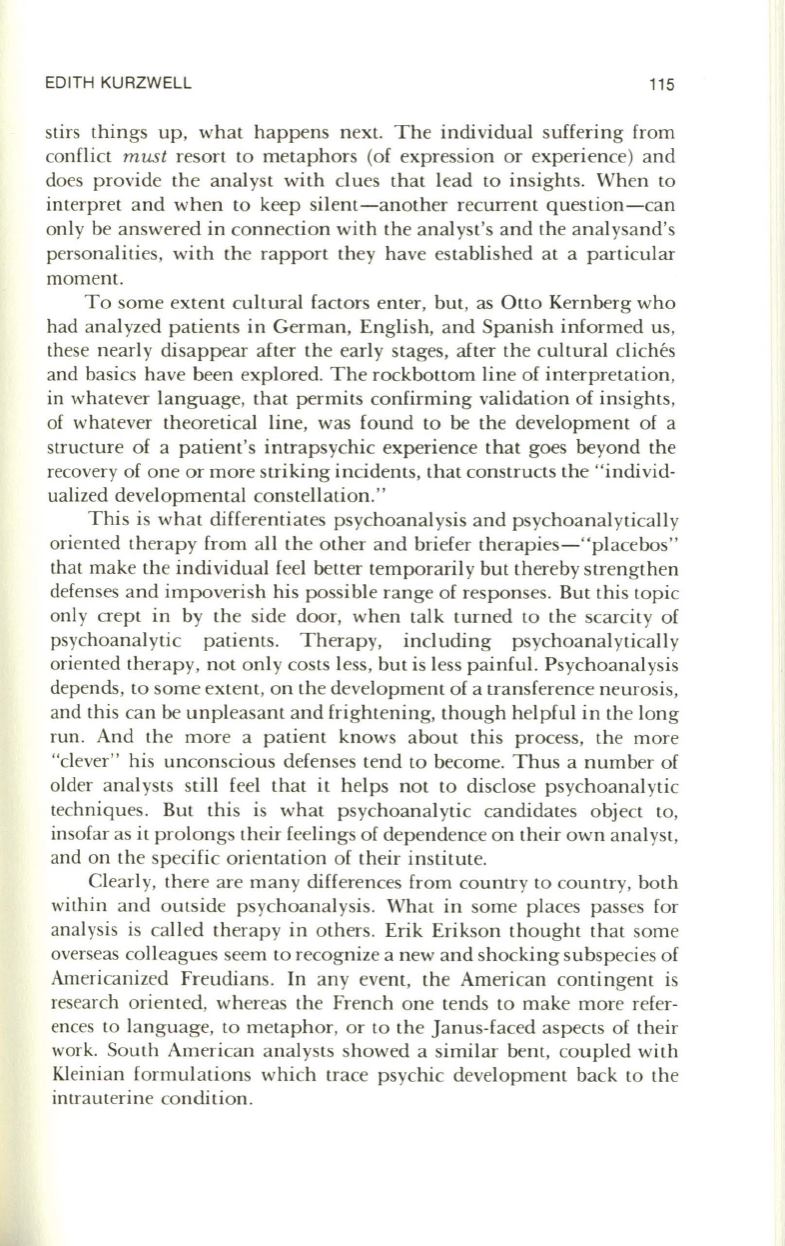
EDITH KURZWELL
115
stirs things up, what happens next. The individual suffering from
conflict
must
resort to metaphors (of expression or experience) and
does provide the analyst with clues that lead to insights. When to
interpret and when to keep silent-another recurrent question-can
only be answered in connection with the analyst's and the analysand's
personalities, with the rapport they have established at a particular
moment.
To some extent cultural factors enter, but, as Otto Kernberg who
had analyzed patients in German, English, and Spanish informed us,
these nearly disappear after the early stages, after the cultural cliches
and basics have been explored. The rockbottom line of interpretation,
in whatever language, that permits confirming validation of insights,
of whatever theoretical line, was found
to
be the development of a
structure of a patient's intrapsychic experience that goes beyond the
recovery of one or more striking incidents, that constructs the "individ–
ualized developmental constellation."
This is what differentiates psychoanalysis and psychoanalytically
oriented therapy from all the other and briefer therapies-"placebos"
that make the individual feel better temporarily but thereby strengthen
defenses and impoverish his possible range of responses. But this topic
only crept in by the side door, when talk turned
to
the scarcity of
psychoanalytic patients. Therapy, including psychoanalytically
oriented therapy, not only costs less, but is less painful. Psychoanalysis
depends, to some extent, on the development of a transference neurosis,
and this can be unpleasant and frightening, though helpful in the long
run. And the more a patient knows about this process, the more
"clever" his unconscious defenses tend to become. Thus a number of
older analysts still feel that it helps not to disclose psychoanalytic
techniques. But this is what psychoanalytic candidates object to,
insofar as it prolongs their feelings of dependence on their own analyst,
and on the specific orientation of their institute.
Clearly, there are many differences from country to country, both
within and outside psychoanalysis. What in some places passes for
analysis is called therapy in others. Erik Erikson thought that some
overseas colleagues seem
to
recognize a new and shocking subspecies of
Americanized Freudians . In any event, the American contingent is
research oriented, whereas the French one tends to make more refer–
ences to language, to metaphor, or to the Janus-faced aspects of their
work. South American analysts showed a similar bent, coupled with
Kleinian formulations which trace psychic development back to the
intrauterine condition.


